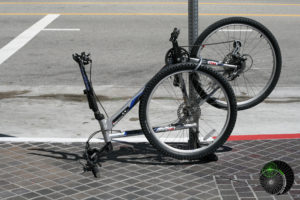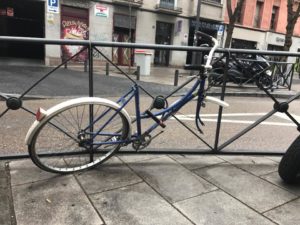I had the honor to know him in person in a Critical Mass years ago. I can say without any fear of being wrong that Quico shares its laugh with the Biciclown (I wrote about him in the past). He is clever, open-minded and a truly adventurer.
His bike is called Vita (life in Italian) and this is precisely what it produces. People become amaze when seeing it. It is a dark blue, tall bike consisting of two bike welded one on the other, with special chain and all the measures adjusted to his size. In the process of constructing it, he had to look for specific parts since not all the bike stores had them. The fact of being a tall bike makes more difficult to overcome high uphills, but Quico has strong legs.
You can follow his adventures in his blog https://a100sonrisasporhora.com (in Spanish). “A 100 sonrisas por hora” means “at 100 smiles per hour” and that is just what he and his bike pass on. Indeed, he shows a flag with a smiley in which the eyes are in reality the wheels of a bicycle. As he relates in his blog, the impact of seeing a tall bike makes children to laugh and express surprise.
He started his trip in Spain and his purpose is to arrive to Malaysia on bike without any specific arrival date, crossing Europe and Asia. He wants to enjoy his trip the most and make people happy.


